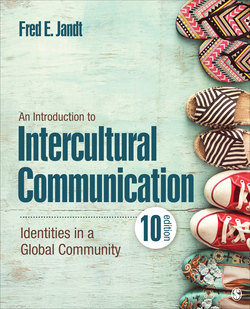Читать книгу An Introduction to Intercultural Communication - Fred E. Jandt - Страница 30
На сайте Литреса книга снята с продажи.
Subgroup and Counterculture
ОглавлениеIn the past, some used the term subculture to refer to groups that in some way deviate from the dominant societal standard (Hebdige, 1979). While members of subcultures present themselves differently than the larger culture, they still function and abide by its rules. The term Counterculture was more typically used to refer to groups that actively go against mainstream culture. To avoid confusing groups based on geographic region, ethnicity, and economic or social class with groups based on occupations and interests, the term Subgroup was sometimes used to refer to these groups.
Psychologists have long recognized that subgroups, or membership groups, have an important influence on the values and attitudes people hold. Like cultures, subgroups provide members with relatively complete sets of values and patterns of behavior, and in many ways pose similar communication problems as cultures. Subgroups exist within a dominant culture and are dependent on that culture. One important subgroup category is occupation. Think of large organizations and of occupations in which most people dress alike, share a common vocabulary and similar values, and are in frequent communication, as through magazines and Twitter. These subgroups include nurses and doctors, police officers, and employees of large organizations such as Microsoft. Subgroups usually do not involve the same large number of people as cultures and are not necessarily thought of as accumulating values and patterns of behavior over generations in the same way cultures do.
The term subgroup has at times been negatively linked to the word deviant. Actually, however, deviant simply means differing from the cultural norm, such as vegetarians in a meat-eating society. Unfortunately, in normal discourse, most people associate deviance with undesirable activities. To understand what is meant by subgroups, you must recognize that vegetarians are as deviant as prostitutes—both groups deviate from the norm, and both are considered subgroups.
Membership in some subgroups is temporary; that is, members may participate for a time and later become inactive or separate from it altogether. For example, there are organizations devoted to Ford cars and trucks. Some people are preoccupied with that for a while and then lose interest and relinquish membership in the group. Membership in other subgroups may be longer lasting. One person may be a firefighter for life and another gay.
However, it is a mistake to think of membership in a culture or subgroup as being so exclusive that it precludes participation in other groups. All of us are and have been members of a variety of subgroups. Think of times in your life when you were preoccupied with the concerns of a certain group. At those times, you were a subgroup member. Examples range from Girl Scouts to Alcoholics Anonymous to youth gangs to religious cults to the military.
Recognize, too, that individuals can adhere to values and attitudes and behaviors of groups of which they are not members. The term Reference group refers to any group in which one aspires to attain membership (Sherif & Sherif, 1953). This behavior is identified in contemporary slang as the wannabe, an individual who imitates the behavior of a group he or she desires to belong to. Some people dress like and talk like gang members but are not members of any gang.
Just as each of us has a cultural identity and one or more subcultural identities, we may also have a subgroup identity. While that group membership may be short-lived, it can, for a while, provide some symbols, rituals, values, and myths that we acknowledge and share with others.
